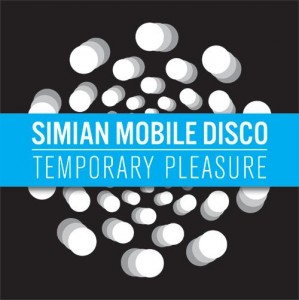Article
EQ
September 2009
Link

Only one sample appears on Temporary Pleasure: Todd Rundgren triumphantly singing “I was born to synthesize” on top of churning layers of modular synthesizer melodies. As far as statements of purpose go, it’s a fitting one for Jas Shaw and James Ford of British duo Simian Mobile Disco. Their 2007 debut Attack Decay Sustain Release and collaboration with Justice, “We Are Your Friends” (with their previous band, Simian), made them the prodigies of the late ’00s synth-heavy electro-house scene. Their follow-up finds them moving toward more hands-on construction and composition of synthetic sound.
“We haven’t been into that noisy electro thing for awhile,” Shaw says. “In the shadow of Justice, whom we like, there seemed to be a lot of bands copying and completely missing the musicality, melody, and chords. A lot of the stuff aping them concentrates on the noisiness.”
The duo’s experience playing in techno clubs informed the tight, spacious sound of Temporary Pleasure [Wichita], recorded in the duo’s recently renovated East London, Pro Tools HD2 and Mac G5-based studio. But their minimalist approach was a challenge.
“You have to choose what you do very carefully, as everything is exposed,” Ford says. “We’re into the idea of using fewer elements but making each element really strong, not piling on loads of shit.”
Each song on Temporary Pleasure contains roughly a dozen instrumental tracks. The bulk comes from the maze of cords that is their modular synthesizer setup, composed of Analogue Systems and Doepfer modules.
“With the modular synth and enough thought, analysis, and modules, you can generate any sound,” Shaw says. “You can make a string section, you can make lightening. I love the fact that it never sounds exactly right.”
The duo has plenty of other synths, such as the ARP 2600 and Moog Prodigy. And a Siel Orchestra (check the Kraftwerk-like piano lead on “Off the Map”) and Roland Juno-60 got extended play. But it was mostly about the modules.
On “10,000 Horses Can’t Be Wrong,” filled with delicate, liquid notes, the main chord progressions were meticulously constructed on their modular synths, a complexity a polysynth couldn’t replicate.
“We’d get a couple of oscillators on the modular working together, and the amp envelope would be quite short, not much attack, a little bit of decay, no sustain, and the filter envelope would close quickly to get a donk sound,” Shaw says. “We did several passes of the same third, one pass on the fifth, and one on the octave, building the chords out of different passes.”
Another favorite trick was what they called “zonging,” which produces space-y, resonant notes. Utilizing an Ibanez rack delay, Shaw and Ford would set the delay really short and turn up the feedback. They also used a Boss RPS-10 on “Ambulance,” which chugs along toward a stratospheric set of trickling high notes.
Although Shaw and Ford typically record guest vocals through a Universal Audio LA-610 preamp and Urei 1176 compressor, some outboard gear was used to manipulate vocals in experimental ways. Jamie Lidell’s voice was mashed up on “Off the Map” using a rare EMS Synthi HiFli guitar synth, recording different takes with vibrato, distortion, and ring modulation.
“When Jamie came, we just plugged him into the HiFli and got quite a mangled sound,” Shaw says. “It was just the quickest thing. Often, you just want to get things done while you’re still excited.”
On “Audacity of Huge,” sung by Yeasayer’s Chris Keating, vocal takes were recorded to a Studer ReVox B67 reel-to-reel tape machine and panned left and right, which created a wide stereo effect due to the slight fade of the tape.
Meanwhile, the bulk of the beats were made on modular creations to steer clear of clichéd sound palettes. “You can make your own swing by laying out sixteenth notes and moving them around in free time until the groove feels good,” Shaw says. “You can get some really odd feels that way.”
And the guys would layer kick drums to get a punchier sound. Three different parts—a sub-y, tuned wave from a filter on the verge of self-oscillation, a click-y kick made out of white noise, and a non-tuned low kick, made out of cross-modulating low sine waves or filtering down white noise—allowed them to shape the sound. The non-tuned component was useful if the root note moved around a lot.
“With electronic music, it’s easy to get faceless, anodyne perfection,” Shaw says. “Our analog gear is all a bit wonky and non-linear and doesn’t do all the things you want. There’s nothing worse than getting exactly what you expect.”